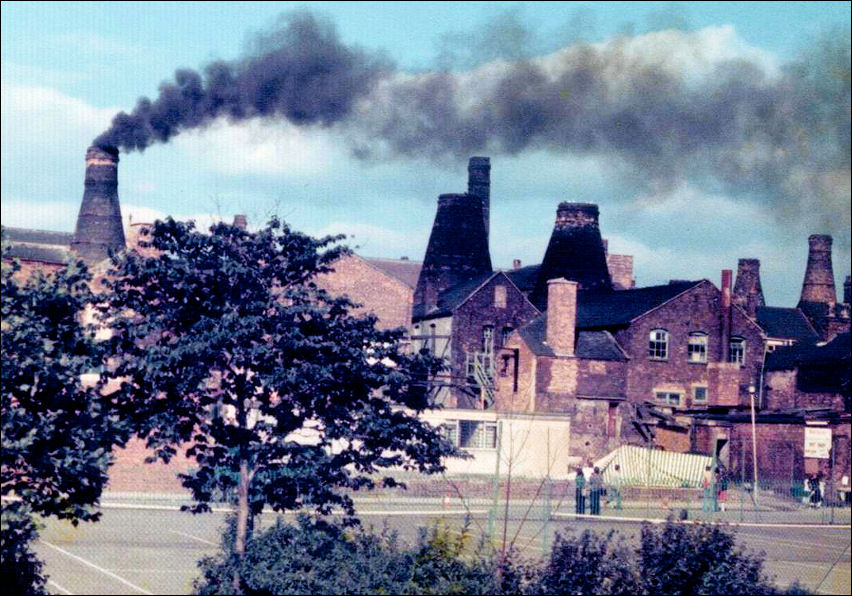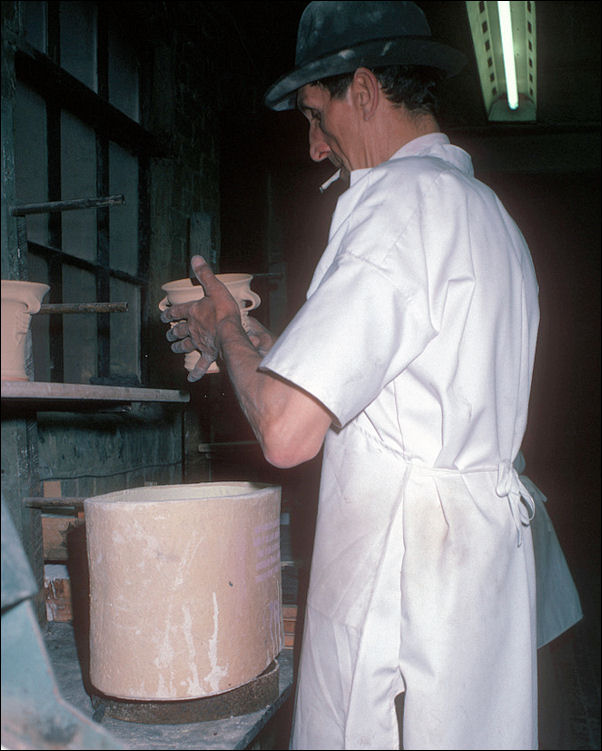![]()
|
|
|
|
|
Stoke-on-Trent - Potworks of the week |
Advert of the Week
Photo of the Week
Last firing of a bottle kiln in Stoke-on-Trent
|
Clean Air Acts - Pollution has been a major problem in the Potteries because of the large number of kilns. It was not uncommon for the sun to be virtually blacked out by the smoke. Many people remember walking the streets and not being able to see their companions next to them. Not surprisingly the area had a very high death rate associated with diseases of the lungs. The Clean Air Acts of the post war period have done much to improve the environment. Between the years 1956 and 1960 a major drive was made to end, once and for all, the bad old legacy of smoke pollution. The Clean Air Act and the development of the continuous pottery kiln fired by gas or electricity between them combined to lay the smoke bogey and by 1958 more smoke was coming from domestic fires in the city than from pottery factories. By 1958 there were 438 bottle kilns still in use with 654 kilns now fired by gas or electric. |

the last firing was
organised by Gladstone Museum and took place at Hudson and Middleton
special dispensation was given for this firing which took place in
1978
picture: Phil Rowley

the last firing - placing the
'green' (unfired) ware in the saggar

the last firing - taking the
saggar into the kiln
The doorway was called the
CLAMMINS or WICKET, surrounded by a stout iron frame
and just large enough for a man with a SAGGAR on his head to pass through.

the last firing - placing the
saggars in the kiln
Photos: Ken and Joan Davis